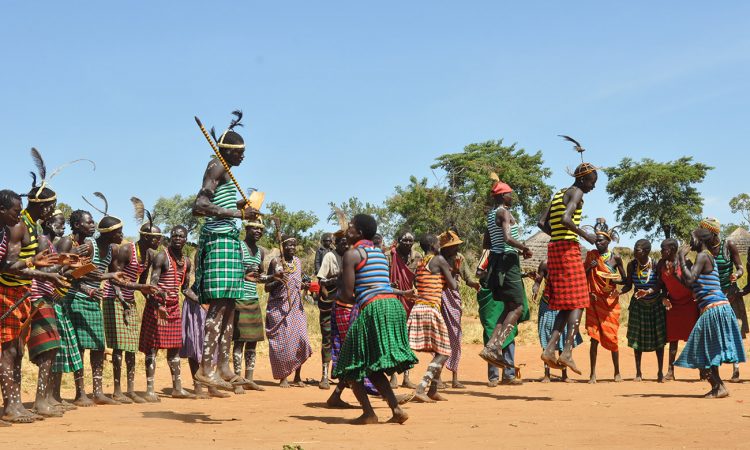Perched high on the rugged slopes of Mount Morungole, near the Kenya–South Sudan border, live the Ik, one of Uganda’s smallest and least-known communities. For the few travellers who venture beyond the sweeping savannahs of Kidepo Valley National Park, meeting the Ik is more than just a cultural excursion; it is a journey into a resilient, living tradition that has quietly enriched Uganda’s tourism tapestry.
The Ik (sometimes called Teuso) speak their own language, Ik, part of the Kuliak branch, and have long relied on subsistence farming to survive in the challenging highlands. Generations ago, droughts, conflicts, and pressure from better-armed pastoral neighbours pushed them deeper into the mountains. Today, the steep ridges of Morungole cradle their terraced gardens of sorghum, millet, beans, and honey, a landscape that reflects both hardship and ingenuity.
For decades, the Ik carried an unfair reputation because anthropologist Colin Turnbull painted a grim picture of them during a time of famine, describing them as selfish and detached from one another in the 1960s. But later researchers, including Cathryn Townsend, discovered a different truth, which is that the Ik are in fact deeply generous and strongly bonded, their culture misrepresented by a snapshot taken in the worst of times.
“If you sit with them long enough,” Townsend wrote, “you see reciprocity in every gesture, food shared, children cared for, songs carried into the night.”
Today, the Ik tell their own story: one of resilience, social complexity, and a profound ethic of sharing. Elders, youth groups, and women’s cooperatives are not only guardians of cultural knowledge but also active planners in shaping how tourism unfolds on their land.
What makes a visit to the Ik special?
The Morungole Hike
The adventure usually begins in Kidepo Valley National Park, where Uganda Wildlife Authority rangers and Ik guides lead visitors on a full-day trek up Mount Morungole. The path winds through scrubland and ridge-top viewpoints, past small farm plots, before opening into hamlets perched against the slopes. The journey itself is part of the reward: each turn reveals a panorama that grows wider and more breathtaking.
Village Encounters
Arriving in an Ik village feels like stepping into a community that thrives on both simplicity and ingenuity. Grain stores stand on stilts to keep out pests; gourds ferment local brews; and neatly fenced gardens brim with herbs and vegetables. With permission, guests may witness children playing games unique to the Ik or hear songs that mark different age-sets, a living tradition rather than a staged performance.
Crafts and Music
The Ik are known for their intricate beadwork, woven baskets, and wooden headpieces, each telling a story of identity and pride. But it is music that truly lingers with visitors. At dusk, layers of call-and-response harmonies ripple across the ridges, voices rising and falling like the mountain winds. Buying a bracelet or basket here isn’t just a souvenir; it is a way of helping families buy school supplies or cover health costs.
Views without Crowds
From the shoulders of Morungole, the view sweeps into Kidepo’s golden plains and on to the distant ranges of Kenya and South Sudan. Unlike busier tourism spots, here the silence is broken only by wind, birdsong, and the occasional laughter of children. It is space in its purest form.
The Ik experience has transformed Northern Uganda’s tourism scene. While Kidepo is famed for lions, buffalo herds, and cheetahs, the Ik add a cultural depth that keeps travellers staying longer and spending more. Youth trained as guides and porters earn direct income; women’s groups supply meals, crafts, and dance performances. Trek fees and revenue-sharing help fund community projects, from schools to health referrals. With these benefits, the Ik have become strong allies in protecting Morungole’s forests and wildlife corridors.
Tourism has also sparked a quiet revival of intangible heritage. Songs, language, and rites of passage are being recorded and passed on with fresh urgency. What was once fading now carries new pride and visibility.
A visit to the Ik is one of Uganda’s most meaningful cultural encounters. It is small in footprint but rich in human connection. For those willing to trade paved roads for mountain paths, the rewards are immense: conversations by the hearth, skies that stretch forever, and the rare feeling that travel can sustain not just memories but also communities.
Most importantly, the Ik are not a “museum tribe” or a photo opportunity. They are contemporary Ugandans, balancing tradition with schooling, healthcare, and market life. Approached respectfully, a visit becomes a two-way exchange: travellers gain insight into a mountain culture, and the Ik gain income, recognition, and conservation partners.
As one Ik elder once told a visiting group, smiling as he pointed to the valley below: “The Mountain feeds us, but now visitors also help us feed our children. That is why you are welcome.”



